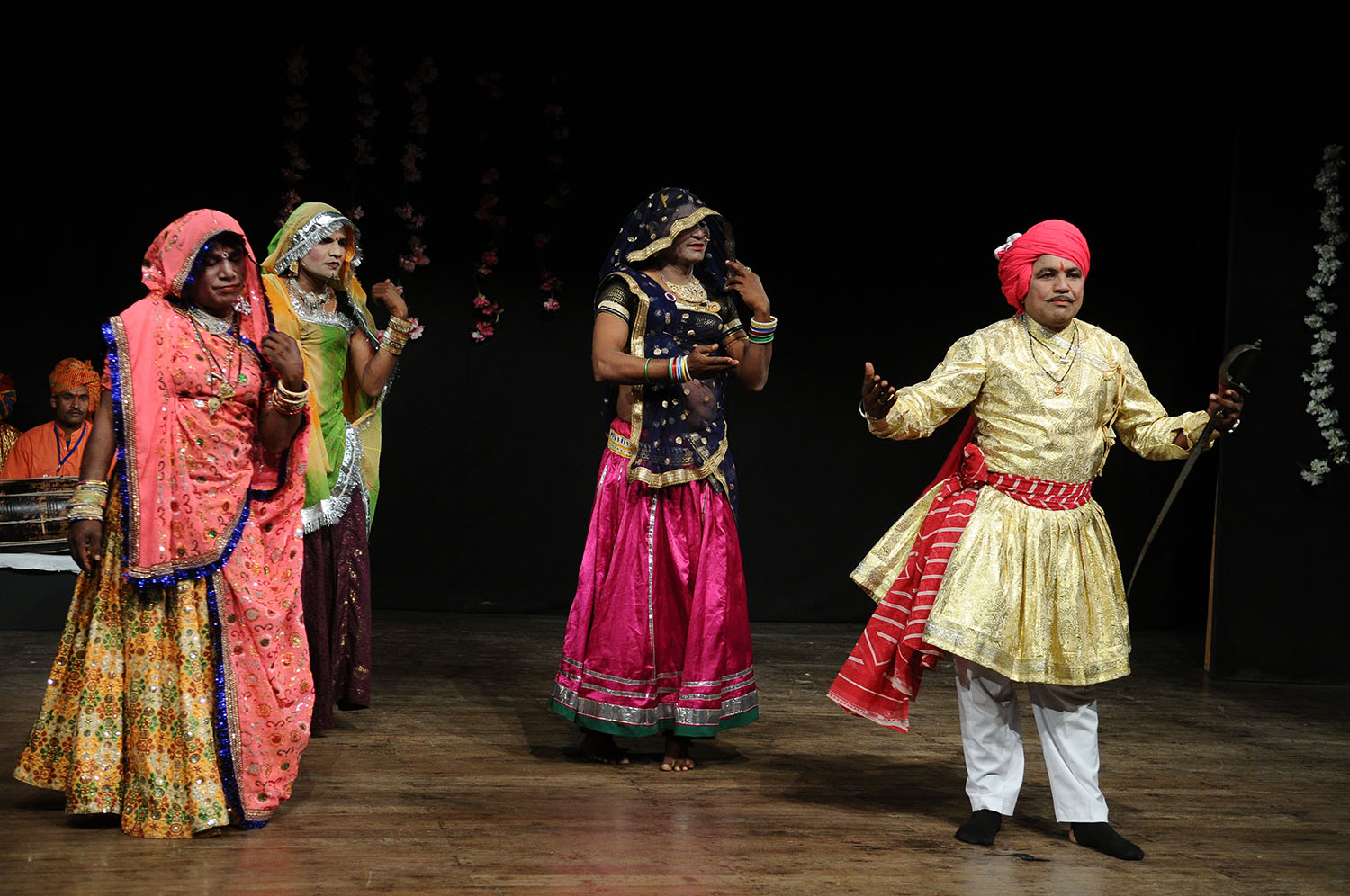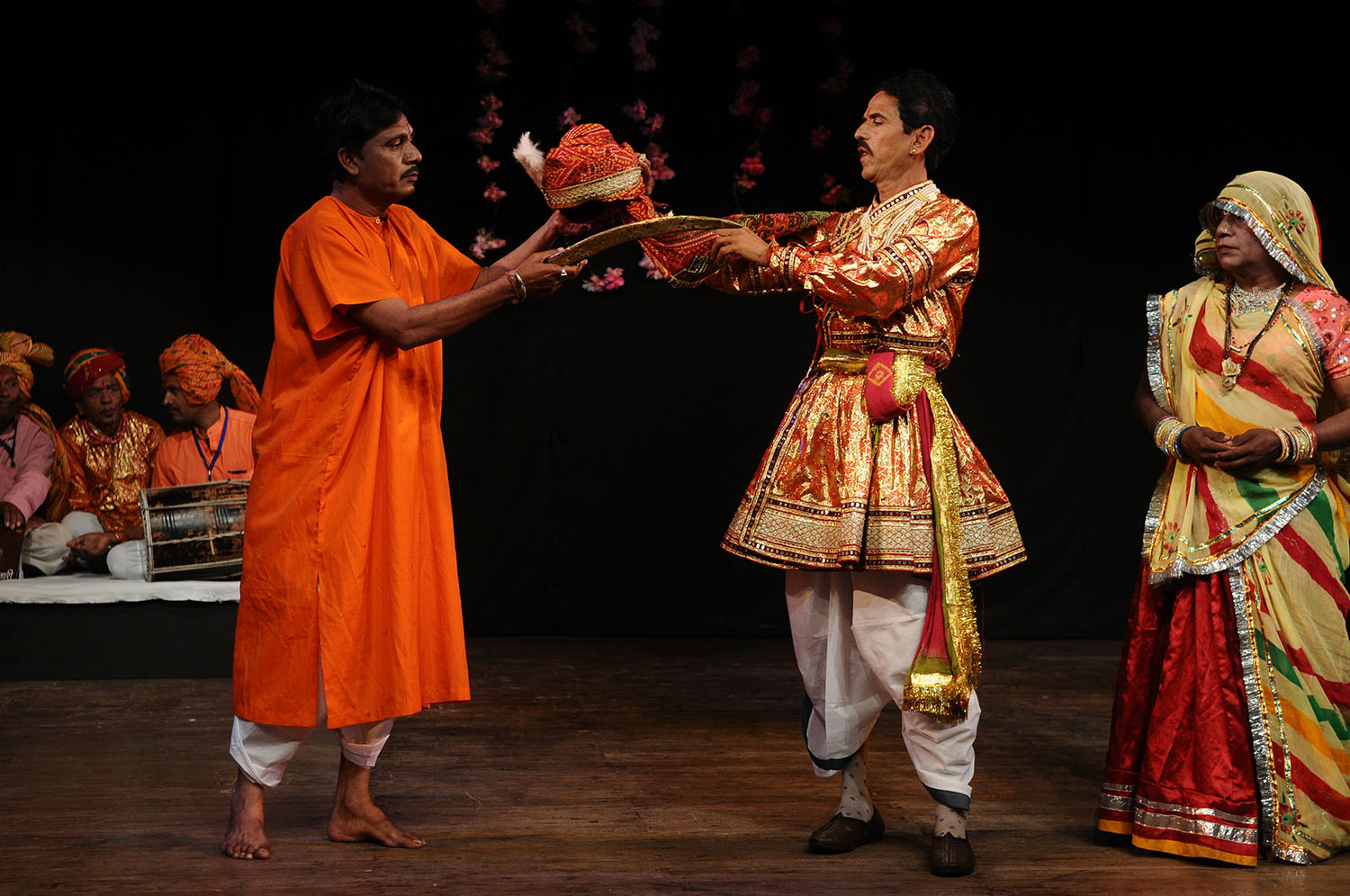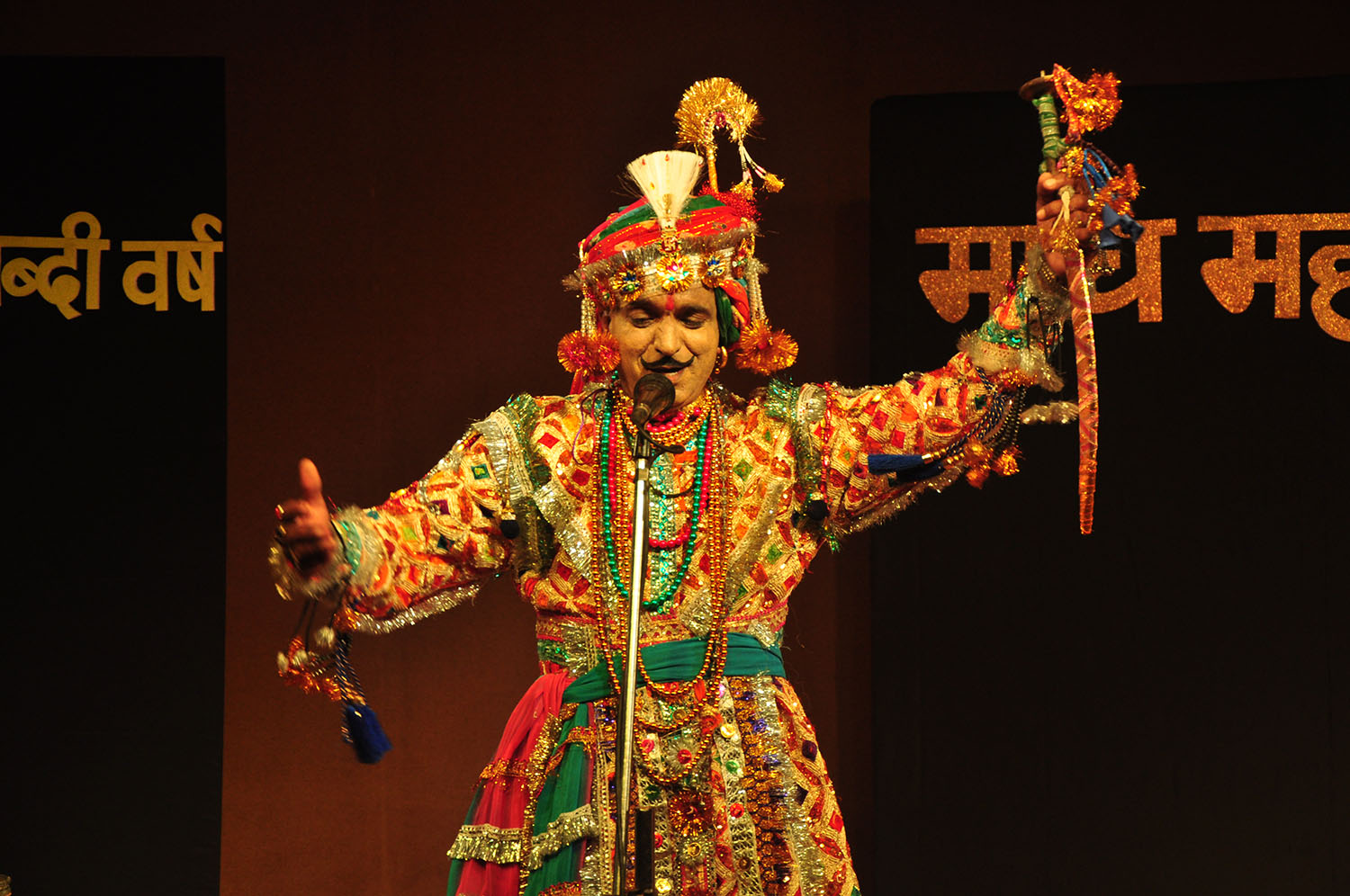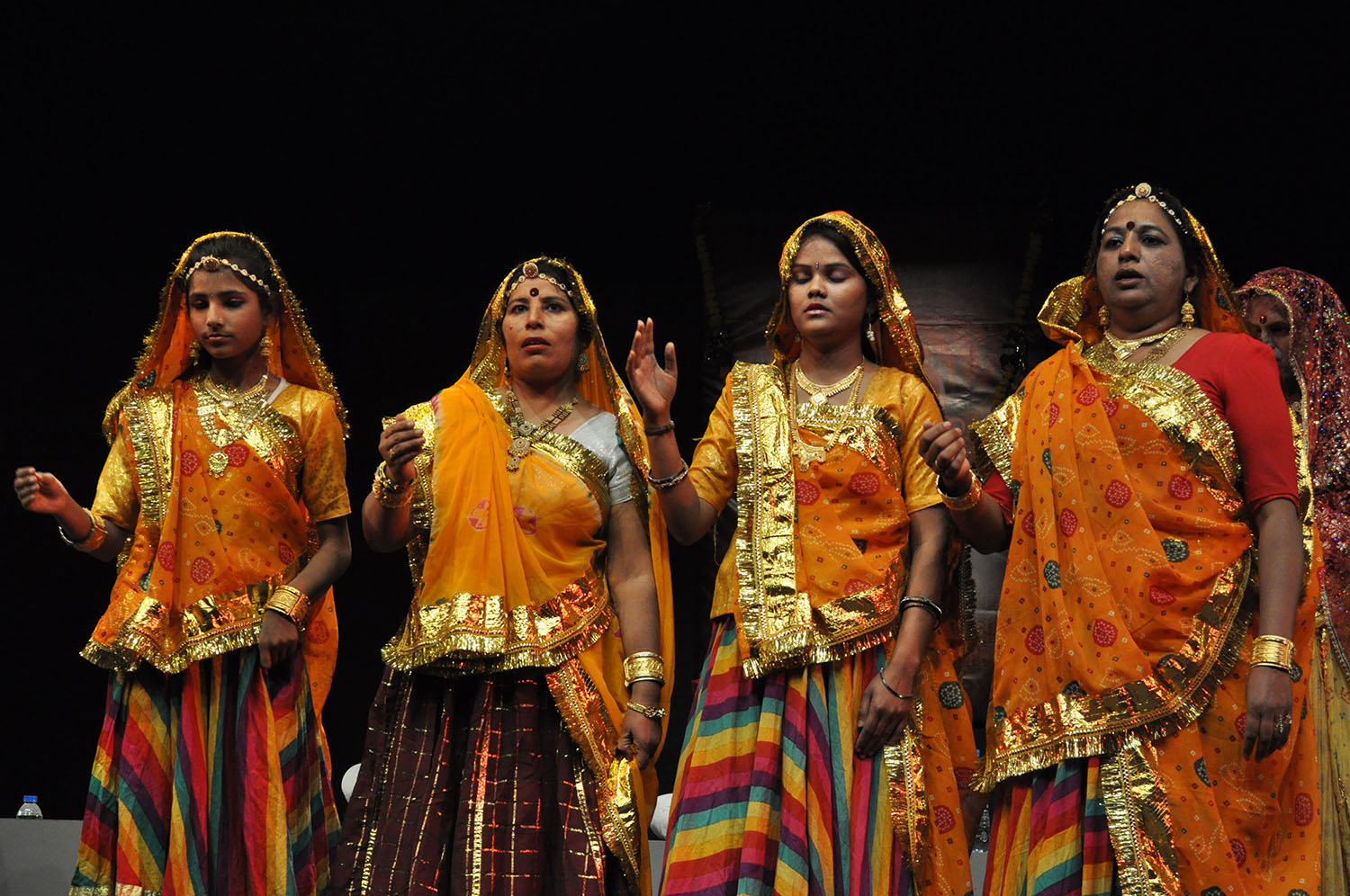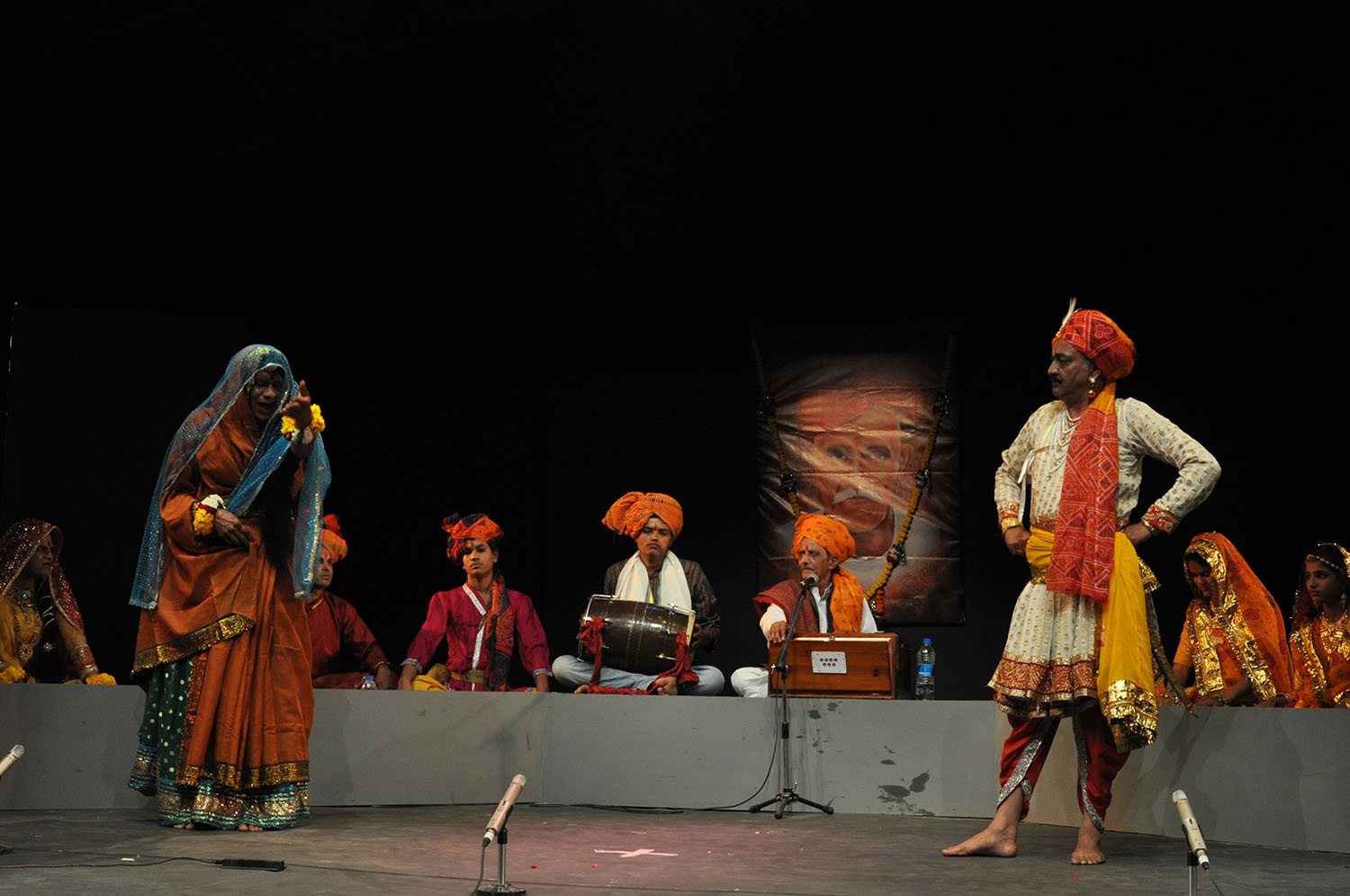ARTICLE
Maach
A form of folk performance popular in the region of Malwa in Madhya Pradesh, maach incorporates song, dance and theatrical performances derived from mythological, religious and historical themes. The word ‘maach’ is the Malwi translation of the Hindi word manch, which translates to ‘stage.’ Maach is usually performed by men, who also play the roles of women characters in the performances. Maach performers are typically residents of villages where the performance is held and work at other jobs during the day.
Preparations for a maach performance in villages commence almost a month prior to the date. A wooden pole called manak khamba is first set up at the end of an open area in the village, accompanied by the playing of dholak, singing, prayer and the distribution of prasad (sacrament) to dispel bad omens. The manak khamba also signals to people in the vicinity about the upcoming maach. Following the installation of the pole, performers begin their preparations and rehearsals and a wooden stage is built nearby, typically facing towards the north. A standard maach stage is about 15 x 12 feet. The backdrop for the performance is a curtain, either plain or painted with a natural landscape. A long band of cloth, intended to hide the feet of the performers, is stretched across the lower segment stage. In the past, performers used their own clothes and household items for the maach; today these are purchased or rented.
Dialogues in maach are called bol and are accompanied with narrative rhyme and melodies known as vanag and rangat, respectively. The performances also involve a technique called tek jhelna (to give support), wherein the dialogue in the form of a song verse is repeated by the choir, which helps reinforce the dialogue for the audience. Tek jhelna also helps the new performers and apprentices learn the dialogue by way of repetition.
The music of maach borrows from classical Hindustani music structures such as the raga. Musical instruments used include the sarangi (a stringed instrument also used in folk music from Punjab and Rajasthan), dhol (double-sided barrel drum) and harmonium. As a musical theatre form, the songs within the performances often take precedence over spoken dialogue.
Maach is typically performed overnight, beginning at around 10:30 or 11 PM and going on until the early morning. The performances are timed according to specific ragas; for instance, the raga khamaj, typically performed at midnight, is used for the songs that open the performances. The music of maach is also influenced by folk songs from the Malwa region that are sung during celebratory occasions such as marriages or festivals.
The combination of song and performance seen in maach has been traced to the performance traditions of khyal from Rajasthan and turra kalagi from Maharashtra, both of which incorporate vocal and instrumental music. Maach is said to have emerged in the late eighteenth and early nineteenth century, with sources suggesting that it was pioneered by one Gopalji Guru from Ujjain, Madhya Pradesh.
Themes in maach performances frequently include social issues stemming from imbalances in power and wealth, presented through the use of satire and humour. It is not performed for religious occasions but more generally for the community’s entertainment: as such, characters and stories are based on a variety historical, mythical and religious figures, such as Nala and Damayanti, Gopichand, Prahlad and local Malwan heroes such as Tejaji and Kedar Singh. The Ramayana, Mahabharata and the Puranas also provide inspiration.
Maach continues to be performed in rural centres in Madhya Pradesh as well as in cities such as Bhopal and Indore, but to a limited extent. Unlike nautanki, tamasha, and other forms of folk theatre, it has not been depicted in other contemporary art forms such as film or theatre.
Bibliography
Brandon, James Rodger. The Cambridge Guide to Asian Theatre. Cambridge University Press, 1993.
Brandon, James R. The Cambridge Guide to Theatre. University of Cambridge Press, 1995.
Hansen, Kathryn. “The Landscape of Premodern Performance.” Grounds for Play: The Nautanki Theatre of North India. Berkeley and Los Angeles: University of California Press, 1992.
Kumar, Sanjana. “Mach is the effective platform of Malwa from last 250 years.” Patrika, September 1, 2016. https://www.patrika.com/bhopal-news/mach-is-the-effective-platform-of-malwa-from-last-250-year-1388304/
Trivedi, Mitali. “Maach: Malwa’s Centuries-old Folk Theatre Form.” Sahapedia, March 2, 2021. https://www.sahapedia.org/maach-malwas-centuries-old-folk-theatre-form#_edn1




